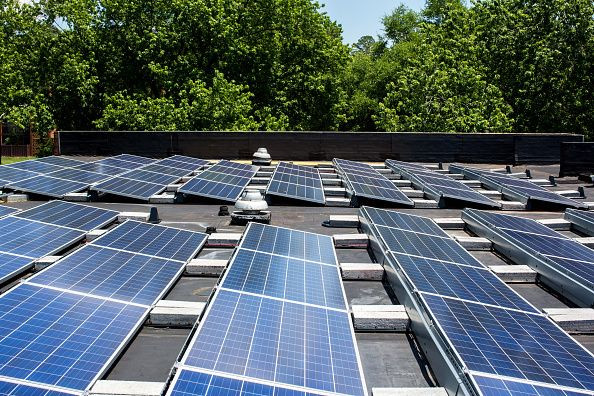Why President Trump’s Solar Tariffs Have Failed

When President Trump put a 30% tariff on most imported solar panels and cells, it was supposed to be a needle in the side of the solar industry and was also meant to drive more investment in U.S. solar manufacturing. Politically it seemed like a wise move, but for the solar industry, it seemed like another headwind they didn't need to deal with.
This article originally appeared in The Motley Fool
As it turns out, tariffs did very little to slow solar installations and even less to drive a renaissance in U.S. manufacturing.
Tariffs are almost unnoticeable in U.S. solar today
The 30% tariff on solar panels could have been crippling for the solar industry (and was for a time). But the tariff's implementation coincided with a global drop in demand (led by China) that caused solar panel prices to crater. Between the start of 2018 and the end of 2018, solar panel prices are expected to drop by one-third. If you do the math, the cost of a solar panel today with the 30% tariff is lower than that of a nontariff solar panel at the beginning of 2018.
Lower costs are leading to better-than-expected operating conditions for solar installers. In residential solar, Sunrun (NASDAQ:RUN) and Vivint Solar (NYSE:VSLR) have bounced back and are both growing again. On the utility side, GTM Research reports that 8,500 megawatts (MW) of utility-scale projects were procured in the first half of 2018, a record for that time of year. Midyear, GTM increased its five-year installation projection by 1,900 MW.
Ironically, developers in the U.S. are more bullish on solar than they were before tariffs were announced. It may be coincidence, but falling costs, which weren't related to tariffs at all, are helping make solar more affordable, and that's helping to grow the market.
The solar manufacturing boom is a whimper
When tariffs were originally announced, they were supposed to drive a solar manufacturing renaissance in the U.S. JinkoSolar (NYSE:JKS) was quick to announce a $410 million manufacturing plant in Jacksonville, Florida, which got a lot of media attention. But that plant was ultimately reduced to a $50 million plant that will only assemble imported cells into modules and will employ about 200 people.
Hanwha Q-Cells (NASDAQ:HQCL) announced a $150 million plant in Georgia that could assemble 1,600 MW of solar panels annually and employ 500 people when it opens in 2019. LG even announced a 500-MW-module assembly plant in Alabama with a $28 million investment that will add 160 jobs. These new plants sound large, but they're for assembly, which is only the final process in solar manufacturing. And the job creation pales in comparison to the estimated 250,000 people who work in solar across the country, primarily selling and installing panels.
The necessary creation of polysilicon, wafer, and solar cells will also still take place overseas, and that's where most of the investment and jobs are created in manufacturing. In fact, the U.S. is losing ground on these products, with REC Silicon laying off 100 workers in July and contemplating shutting down its Washington facility altogether. Even if jobs are being gained in one part of solar manufacturing (module assembly) they're being lost in other parts of the value chain (polysilicon).
The one company that did make a big expansion in the U.S. was First Solar (NASDAQ:FSLR), which is finishing a 1,200 MW expansion to its Ohio manufacturing facility. But it was never subject to tariffs and is also expanding in Asia. Tariffs may have tipped the planned investment, but they weren't the main driver.
Not a lot of levers left to hold solar down
At the end of the day, solar energy will win or lose in the marketplace based on its cost effectiveness. And it's already one of the cheapest forms of new energy (along with wind energy) in most states in the U.S.
Most of the money going into installing solar farms is on the construction side and is spent in the U.S., so tariffs will have a limited impact going forward. And the current tariffs are set to sunset over the next three years and two months. Over that time, with more supportive legislators coming into office on the state, local, and national level, the attack on solar energy of the last two years will likely be coming to an end. There won't be a lot of levers left to pull that can hold the industry back, and that should be bullish for the U.S. solar industry in the long term.
The Motley Fool has a disclosure policy.





















